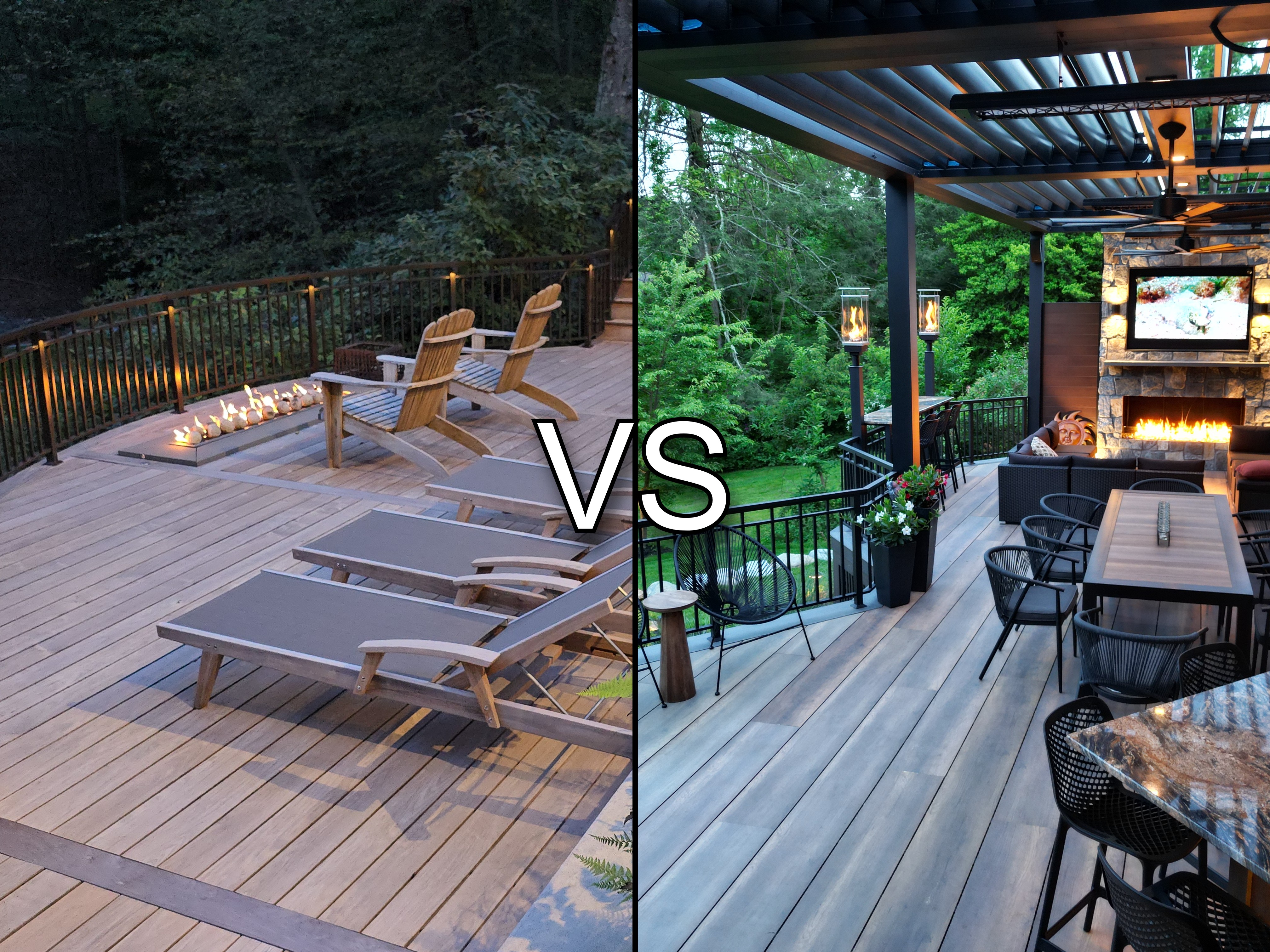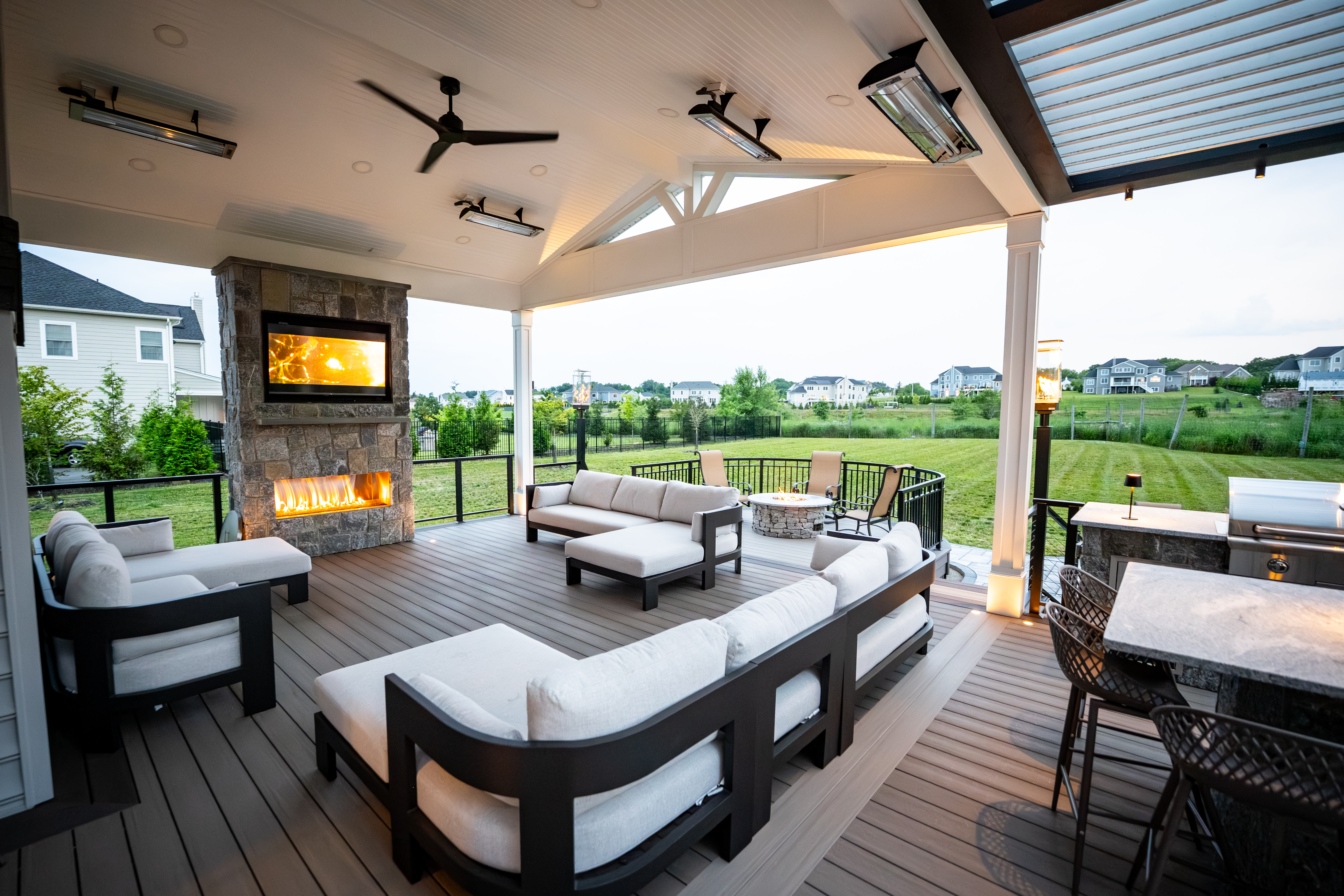

When you imagine your dream deck, you’re probably picturing summer evenings, relaxed gatherings, and the perfect outdoor retreat—not hours of sanding, staining, or worrying about boards warping after a rainstorm. That’s why choosing the right decking material is one of the most important decisions you’ll make in your project.
The material you select determines how your deck will look, how long it will last, and how much time you’ll spend maintaining it. Some homeowners fall in love with the timeless character of hardwood, while others want a deck that stays beautiful with minimal effort.
As a full-service design-build team, we guide you through this decision from the very first consultation. We’ll explore the pros and cons of each option, share why we recommend PVC decking for most projects, and help you find the right balance of beauty, durability, and upkeep for your lifestyle.
When it comes to decking, three materials dominate the conversation: PVC, hardwood, and composite. Each has its strengths and trade-offs, but only one truly delivers the combination of durability and low maintenance that most homeowners are looking for.

PVC decking has become the top choice for homeowners who want a beautiful deck without the constant upkeep. It’s fully water-resistant, won’t warp, rot, or host mold, and requires only the occasional rinse to look like new.
Because PVC boards don’t absorb moisture, they’re ideal for any climate and for busy homeowners who want to spend weekends relaxing, not sealing or staining. It also comes in realistic wood tones and textures—brands like Azek, one of our trusted partners, have mastered that natural look while maintaining PVC’s unmatched longevity.
For those who can’t resist the timeless beauty of real wood, hardwoods like Ipe remain a premium choice. These dense, exotic woods have a rich color and a natural feel underfoot that’s hard to replicate.
The trade-off is maintenance. To keep that deep color and protect against weathering, hardwood needs regular oiling or sealing, and it can gray over time if left untreated. Our team is happy to design and build with hardwoods for clients who want that classic, high-end look—and we’ll guide you on the best care routine to keep it stunning.

Composite boards are a mix of wood fibers and plastic, and while they’ve been popular in the past, they come with performance limitations. Composite can swell when exposed to moisture, fade under sunlight, and often runs hotter underfoot in summer.
For these reasons, we don’t build with composite decking. Our focus is on materials that meet the highest durability standards and provide long-term value for our clients.
After building countless decks and seeing how different materials perform over time, our team has found that PVC delivers the best long-term value for most homeowners. Here’s why we often recommend it:
- Completely moisture and insect-resistant—PVC won’t absorb water, rot, or become a home for termites, which means it performs flawlessly in any weather.
- Minimal maintenance—a quick rinse with a hose is usually all it takes to keep it looking fresh. No sanding, staining, or sealing needed.
- Color stability and longevity—unlike wood or composite, PVC maintains its color for years without fading or graying.
- Lightweight and versatile for custom designs—its structural consistency makes it ideal for complex layouts, multi-level decks, and intricate patterns.
At the end of the day, our recommendation comes down to quality and value for our clients. A PVC deck doesn’t just save you time and maintenance—it gives you the confidence that your investment will look beautiful and perform for decades.
While PVC is our top recommendation for most projects thanks to its unbeatable durability and low-maintenance lifestyle, we know that every homeowner has a unique vision for their outdoor space. Some want to skip the upkeep and enjoy decades of worry-free living, while others are drawn to the warmth and character of natural hardwoods like Ipe.
As a full-service design-build firm, our job is to guide you toward the material that best matches your lifestyle, design goals, and maintenance comfort level. We’ll walk you through the pros and cons of each option so you can make an informed choice. And whether you choose the carefree performance of PVC or the timeless appeal of real wood, our team will design and build a deck that looks stunning and lasts for decades.
If you’re ready to start planning the perfect deck, we’ll handle everything from design to permitting to construction. All you need to do is reach out for a consultation, and we’ll help bring your outdoor vision to life.